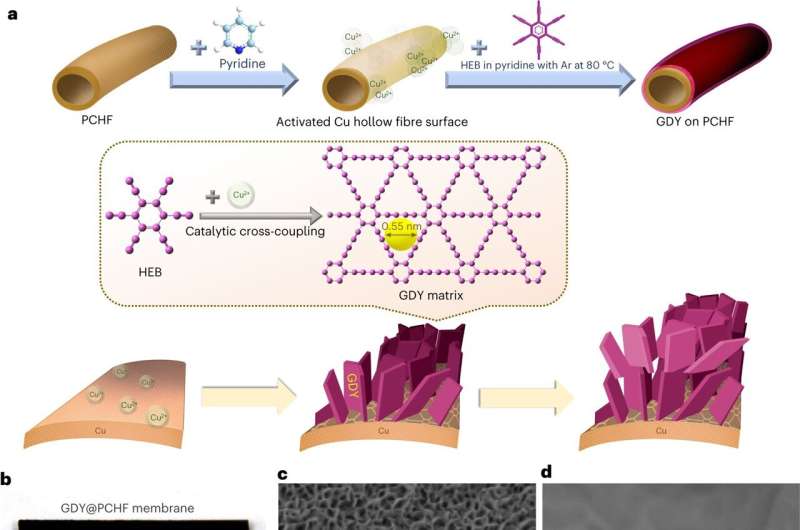This article has been reviewed according to Science X's editorial process and policies. Editors have highlighted the following attributes while ensuring the content's credibility:
fact-checked
peer-reviewed publication
trusted source
proofread
Researchers develop ultrahigh-water-flux membranes for seawater desalination

The supply–demand imbalance of clean water has resulted in a global sustainability crisis. The United Nations World Water Developments Report 2023 reveals that 2–3 billion people are suffering from a shortage of water.
Seawater desalination via membrane separation offers a promising approach to this crisis. However, most membranes are restricted by low water flux because the membrane quality is challenged by harsh conditions and/or complex processes in preparation, leading to low water productivity and low energy efficiency. Thus, it is essential to develop desalination membranes with a high flux.
A research group led by Prof. Zeng Gaofeng at Shanghai Advanced Research Institute (SARI) of the Chinese Academy of Sciences, in collaboration with Prof. Shi Guosheng at Shanghai University, has developed graphdiyne composite membranes that achieve nearly complete salt rejection and ultrahigh water flux in seawater desalination. Their results were published in Nature Water on Sept. 4.
The researchers fabricated nanopore-structured graphdiyne membranes with a submicron thickness on porous Cu hollow fibers directly from a monomer of hexaethynylbenzene via Glaser-Hay cross-coupling reaction under mild solvothermal conditions.
The graphdiyne membranes exhibited more than 99.9% rejection to small ions of seawater and one to three orders of magnitude higher water fluxes than commercial membranes, such as zeolite membranes, metal-organic frameworks membranes and graphene-based membranes. They also exhibited reliable stability in long-term tests with hypersaline water, real seawater and pollutant-containing waters.
Theoretical calculations suggested that interfaces of saline-water/graphdiyne and saline-water/vapor contained one to three molecular layers of pure water without salt, which contributed to complete salt rejections on the graphdiyne membrane. Through a two-layered graphdiyne channel model, ultrahigh water fluxes were achieved, which is in line with experimental observations.
These findings not only provide an adaptive method for preparing graphdiyne membranes but also indicate the potential of obtaining other alkadiyne-containing membranes under a similar methodology, which may be used for membrane separation, ion transfer and energy conversion.
More information: Huiling Chen et al, Ultrahigh-water-flux desalination on graphdiyne membranes, Nature Water (2023). DOI: 10.1038/s44221-023-00123-3

















